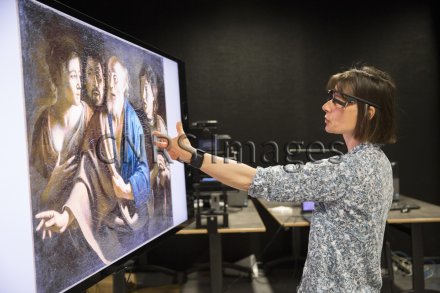Research program(s)
Production year
2017

© Claire-Lise HAVET / IRHIS / CNRS Images
20170041_0019
Laurence Delbarre, an engineer at the SCALab laboratory, tests the Pupil Labs eye-tracking system in front of the Mathieu Le Nain painting "The Denial of Saint Peter" (circa 1655). Eye-tracking is a technique for recording eye movements that involves detecting, in real-time and with high spatial and temporal accuracy, the position of the gaze using a video camera. Initially developed for treating post-traumatic stress disorder, this innovation is now being used by museums to better understand responses to artworks. This device is combined with a wristband that records heart rate and electrical activity in order to assess the degree of emotion felt by a visitor in front of an artwork. Pupil Labs was developed by MIT students and forms part of the VISUALL-tek project, a library of tools that enables the collective examination of images. These apps are the result of an interdisciplinary dialogue between social science researchers and computer scientists specialising in human-machine interaction.
The use of media visible on the CNRS Images Platform can be granted on request. Any reproduction or representation is forbidden without prior authorization from CNRS Images (except for resources under Creative Commons license).
No modification of an image may be made without the prior consent of CNRS Images.
No use of an image for advertising purposes or distribution to a third party may be made without the prior agreement of CNRS Images.
For more information, please consult our general conditions
2017
Our work is guided by the way scientists question the world around them and we translate their research into images to help people to understand the world better and to awaken their curiosity and wonderment.